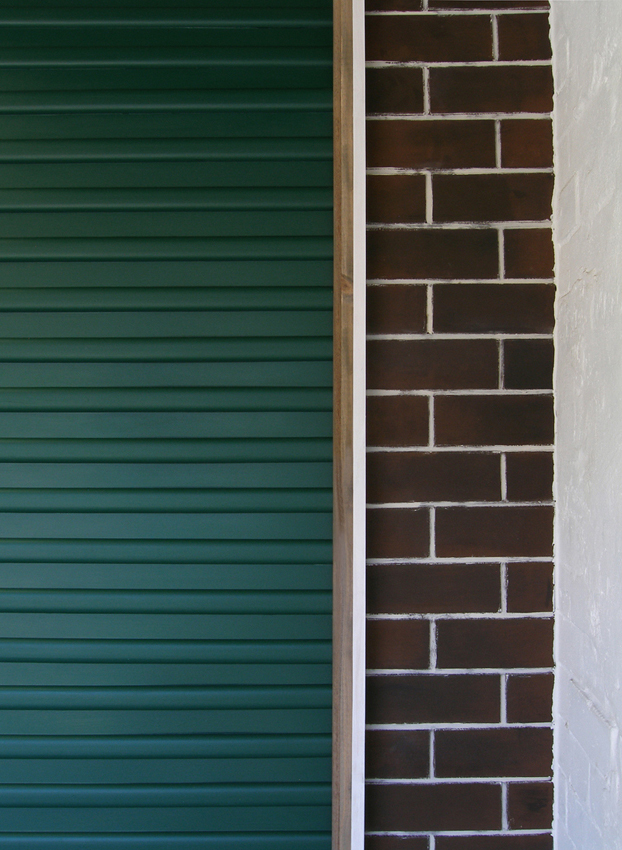Wittgenstein’s House/ etc.
Wittgenstein’s House/Heidegger’s Hut etc.






Alex Gawronski: Wittgenstein’s House/Heidegger’s Hut etc., 2014
Marrickville Garage, Marrickville, Sydney
(Timber, mdf, cardboard, acrylic paint)
This work was firstly a response to two earlier versions of works based on garages, Mirage vers 1. (South – 1998) and vers 2. (MCA, Primavera – 2001). Unlike those works though which depended on inserting an alien narrative into gallery and museum spaces, this work responded instead to Marrickville Garage’s original identity as a suburban garage in Sydney’s Inner West. In fact, Marrickville Garage’s dual existence as a prosaic, ultra-functional urban structure and a space for conceptual and spatial art speaks of a greater perceptual rift. This rift concerns the tendency to grant primacy to the notion of a pre-extant ‘earthy’ reality, which underscores and ultimately dominates everything else, including the supposed over-reachingness of contemporary art. However, to imagine that the Real can be reduced automatically to unquestionable commonsense is to underestimate the extent to which even the most banal forms, structures and activities are always concepts first. Indeed, their very banality allows them to assume a habitual identity that consistently conceals this fact.
A philosopher like Ludwig Wittgenstein, whose writings testify to their utmost abstraction, brought such abstraction to bear on the house he famously designed for himself, whose ascetic structural perfection rendered it apparently unlivable. On the other hand, Martin Heiddeger, who wrote extensively on the philosophical concept of dwelling and its broader metaphysical connotations, famously retreated to a rustic, völkisch mountain hut in Germany’s Black Forest in his attempts to embrace the spirit of dwelling in his age (as far as he saw it, for better and worse). Thus, the ‘high’ and ‘low’ examples of dwelling conceptualised by these two important thinkers suggests, when juxtaposed, the arbitrariness of such designations. They are dissimulated terms burdened with preconceptions while essentially existing on a differentiated, though ultimately identical theoretical plane.
Producing and exhibiting art, especially of a constructed or architectural nature, is tantamount to habitation. The artist makes the museum his or her home, at least momentarily, just as he or she makes of the lowly and common a Parnassus of possibility. This realisation will always be more radical than it sounds. In the instance of this work, Marrickville Garage was implicitly suggested to partake of the same continuum as Wittgenstein’s formalist palace and Heiddeger’s archetypal Heimlich dwelling; the site is always itself and something else.